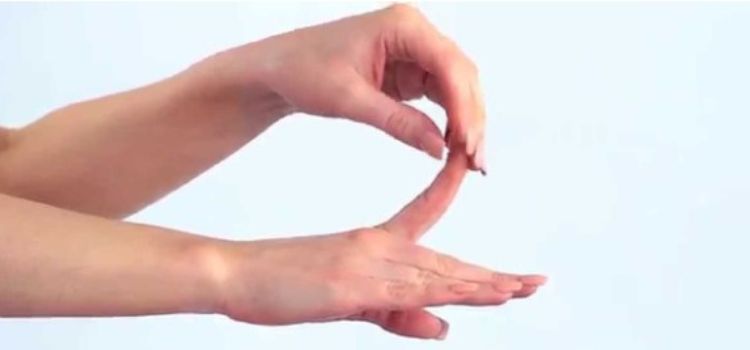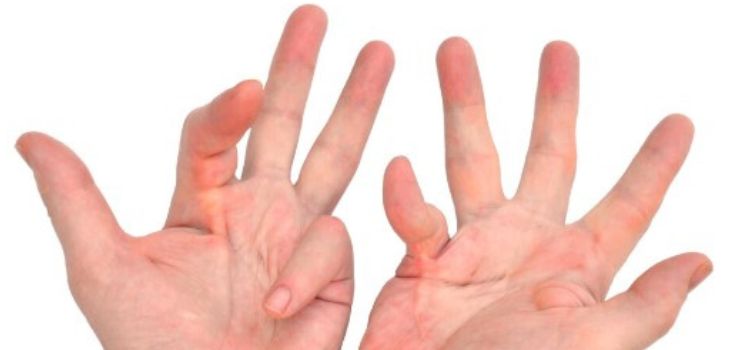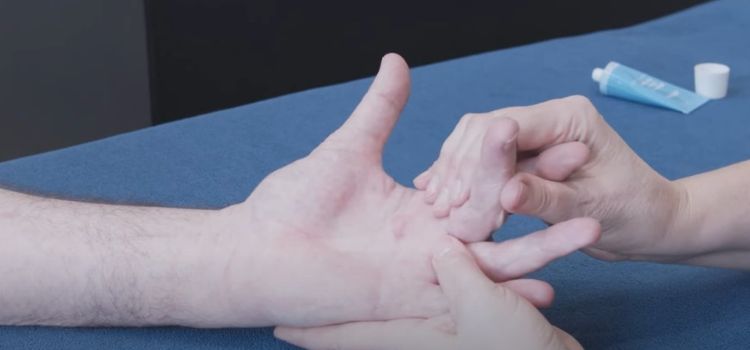Living with Dupuytren contracture can be challenging, affecting the flexibility and functionality of your hands. This article explores the significance of stretching exercises in managing this condition and regaining control of your hands.
Understanding Dupuytren Contracture

Dupuytren contracture is a hand deformity that develops slowly over years, affecting the connective tissue under the skin of the palm. This condition can limit hand movements and impact daily activities. The precise cause of Dupuytren contracture remains elusive, but its development is influenced by various factors, including genetic predisposition, advancing age, and specific health conditions.
Symptoms and Progression

Initial signs encompass the emergence of lumps or nodules in the palm, resulting in the gradual contraction of fingers over time. The progression varies, with some individuals undergoing a slow tightening of the tissues, while others may experience a more rapid onset of symptoms.
Medical Treatments
Traditional medical treatments for Dupuytren contracture include surgery and injections, but these options come with limitations and potential side effects. Surgery, while effective, involves a recovery period and the risk of complications. Injections may provide temporary relief but might require repeated procedures.
Role of Stretching Exercises
Stretching exercises play a crucial role in managing Dupuytren contracture. Stretching exercises aim to improve flexibility, relieve stiffness, and enhance the range of motion in the affected hand. Incorporating these exercises into your daily routine provides a proactive and non-invasive approach to managing the condition.
Before You Start Consultation with a Healthcare Professional
Prior to starting any new exercise regimen, it is highly advisable to seek advice from a healthcare professional. Consulting with a healthcare expert ensures that the exercises are in line with your specific health requirements and any existing conditions you may have. Taking this proactive measure not only improves the safety of your workout but also enables a customized approach, addressing potential concerns or limitations. Engaging with a healthcare professional offers valuable insights, guiding you on a fitness journey that is both effective and tailored to your individual health circumstances.
Effective Stretching Exercises for Dupuytren Contracture:
- Wrist Flexor Stretch:
- Gently bend your wrist backward, holding the stretch for 15-30 seconds.
- Repeat on the other hand.
- Finger Extension Stretch:
- Straighten your fingers and use your unaffected hand to assist in stretching them back.
- Hold for 15-30 seconds, repeating as needed.
- Thumb Flexor Stretch:
- Gradually extend your thumb away from the palm, holding the stretch.
- Repeat on the opposite hand.
- Hand Dorsum Stretch:
- Place your affected hand on a flat surface, fingers pointing backward.
- Gently press down to stretch the palm and fingers.
Creating a Routine
Establishing a consistent routine is key when incorporating stretching exercises into your daily life. Creating a dedicated routine ensures that you allocate time for these exercises regularly, increasing the effectiveness of your efforts.
Consistency is crucial for achieving long-term benefits, as it helps your body adapt to the exercises and promotes gradual improvement in flexibility.
Whether you choose to integrate stretching into your morning or evening routine, or even during short breaks throughout the day, having a set schedule enhances the likelihood of making these exercises a sustainable and integral part of your lifestyle.
By making stretching a habitual practice, you not only maximize its impact on managing Dupuytren contracture but also cultivate a positive approach to overall hand health.
Tips for Maximum Benefits
To derive maximum benefits from your stretching exercises for Dupuytren contracture, consider incorporating a few essential tips into your routine. Begin with a gentle warm-up for your hands before starting the exercises to prepare your muscles and joints.
Listen to your body, avoiding overexertion, and focus on gradual progress rather than pushing for immediate results. Pay attention to proper technique and form during each stretch to ensure effectiveness and minimize the risk of injury.
Additionally, explore variations in intensity and duration based on your comfort level and the specific needs of your hands. These tips not only enhance the overall effectiveness of the exercises but also contribute to a safer and more enjoyable stretching experience, promoting better hand flexibility and management of Dupuytren contracture over time.
Tracking Progress
Tracking your progress is a vital aspect of incorporating stretching exercises into your routine for managing Dupuytren contracture. Maintaining a record of your exercises allows you to monitor improvements over time.
This record can include details such as the duration of stretches, any modifications made, and how your hands feel after each session. Regularly reviewing your progress enables you to adjust the intensity and duration of exercises based on your individual response, ensuring that your routine evolves with your improving flexibility.
Celebrating small victories along the way provides motivation and encouragement, transforming your journey into a tangible and fulfilling process. By actively tracking and acknowledging your advancements, you not only stay engaged in your self-care but also gain a deeper understanding of the positive impact these exercises have on managing Dupuytren contracture.
Lifestyle Changes for Better Results
Incorporating lifestyle changes alongside stretching exercises can significantly enhance the results in managing Dupuytren contracture. Consider making ergonomic adjustments in your daily activities to reduce strain on your hands.
Pay attention to hand positions during repetitive motions and activities, ensuring they align with principles that promote joint health. Avoiding activities that may exacerbate symptoms is crucial, and it’s beneficial to find alternative approaches or tools to minimize stress on the affected hand.
By integrating these lifestyle modifications, you create an environment that supports the positive effects of stretching exercises, fostering an overall improvement in hand flexibility and function. These adjustments contribute to a holistic approach in managing Dupuytren contracture, offering a comprehensive strategy for better results and an improved quality of life.
Combining Stretching with Other Therapies
Combining stretching exercises with other therapeutic approaches can amplify the effectiveness of managing Dupuytren contracture. Integrating physical therapy into your routine can provide additional targeted exercises and guidance, complementing the benefits of stretching.
Moreover, using assistive devices, such as braces or splints, may offer support and promote optimal hand positioning during activities. This multi-faceted approach addresses Dupuytren contracture from various angles, enhancing flexibility, and mitigating symptoms.
Collaborating with healthcare professionals to determine the most suitable combination of therapies tailored to your specific needs can result in a more comprehensive and personalized treatment plan, maximizing the positive outcomes in your journey toward improved hand function and overall well-being.
Real-life Success Stories
Real-life success stories from individuals who have effectively managed Dupuytren contracture through consistent stretching exercises provide inspiration and motivation. These stories offer valuable insights into the transformative power of incorporating stretching routines into daily life.
By sharing their experiences, these individuals shed light on the challenges they faced and the milestones they achieved, demonstrating that a proactive approach can yield positive outcomes. Reading about real-life successes not only instills hope but also provides practical tips and encouragement for those navigating their journey with Dupuytren contracture.
These narratives serve as a testament to the impact of dedication and consistency in implementing stretching exercises, showcasing that tangible improvements in hand flexibility and function are achievable through commitment and perseverance.
Common Myths about Dupuytren Contracture and Stretching
Dispelling myths and addressing common concerns, such as the fear that exercising could worsen the condition, can empower individuals to embrace stretching as a valuable part of their self-care routine.
FAQs:
- Can stretching exercises cure Dupuytren contracture?
- While stretching exercises cannot cure the condition, they can significantly improve flexibility and slow down its progression.
- Are stretching exercises painful for individuals with Dupuytren contracture?
- Some discomfort is normal at first, but the exercises should not hurt. If you feel a lot of pain, you should talk to a healthcare professional.
- How much time does it typically take to observe results from stretching exercises?
- Results vary, but consistent practice over weeks and months can lead to noticeable improvements.
- Can stretching exercises prevent the need for surgery?
- In some cases, regular stretching exercises may help delay or reduce the need for surgical intervention.
- Are there specific exercises to avoid with Dupuytren contracture?
- It’s advisable to avoid exercises that cause excessive strain on the affected hand. Consult with a healthcare professional for personalized guidance.
Conclusion
In conclusion, the journey of managing Dupuytren contracture through stretching exercises is one of dedication, adaptability, and resilience. By understanding the condition, incorporating targeted exercises, and embracing lifestyle changes, individuals can regain control over their hands and enhance overall well-being.
The significance of consulting healthcare professionals, tracking progress, and learning from real-life success stories cannot be overstated. The combined efforts of stretching exercises, lifestyle adjustments, and additional therapies offer a holistic and proactive approach. Remember, each small victory in flexibility improvement is a step toward reclaiming the functionality of your hands. With commitment and personalized care, individuals can navigate the challenges of Dupuytren contracture, fostering a sense of empowerment and improved quality of life.


